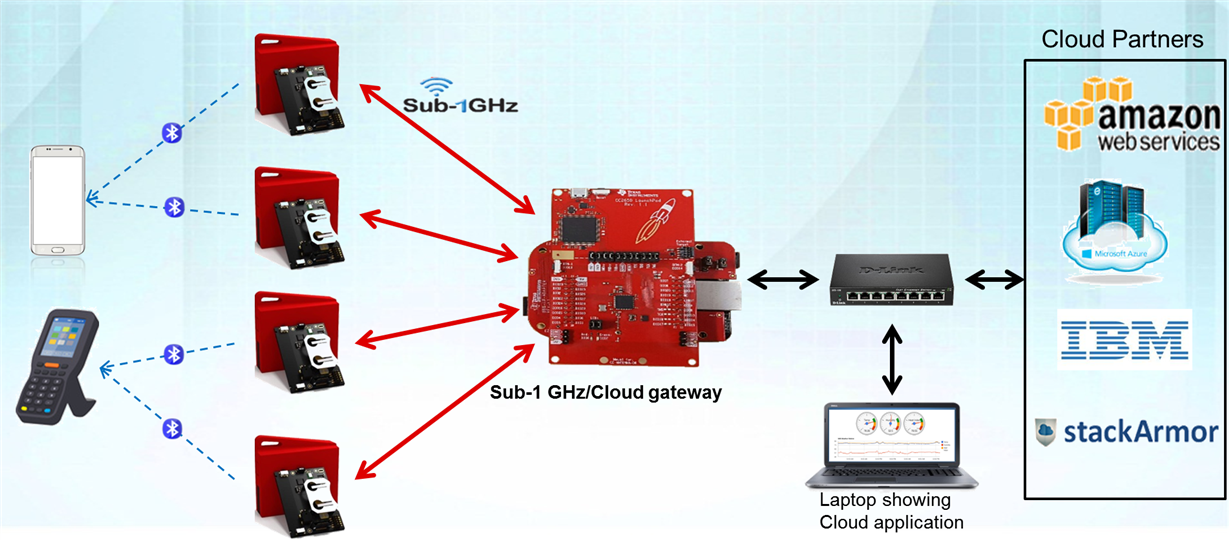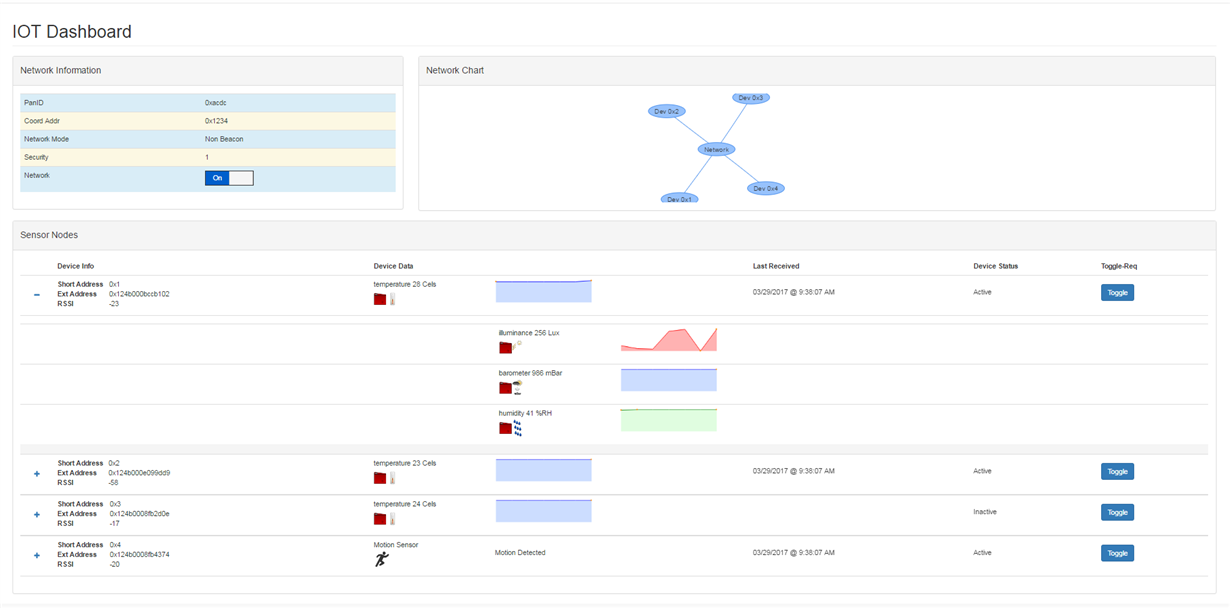SSZTA22 July 2017 CC1310 , CC1350
In my last post, “Collecting environmental data with less energy and wiring,” I discussed making more applications wireless, but how can all this data be collected and manipulated in one place? The solution is the SimpleLink™ Sub-1 GHz Sensor to Cloud, so today I will discuss how to easily set up a sensor-to-cloud network.
The SimpleLink™ Sub-1 GHz Sensor-to-Cloud systems consist of various wireless sensors and a wireless gateway connected to the internet. The wireless gateway hosts all of the information from the sensor nodes to simplifying the collection of data. However, some systems send all sensor data to a third-party service to host. Using another server elsewhere is easier if you have multiple wireless gateways in a gateway or want to compare data between buildings. Texas Instruments offers the Beagle Bone Black paired with the WLINK8 BeagleBone Black wireless cape and the SimpleLink™ Sub-1 GHz CC1310 LaunchPad™ development kit to create a simple out-of-the-box wireless gateway. Figure 1 demonstrates how the TI SimpleLink dual-band CC1350 SensorTag kits connect to cloud partners via the BeagleBone Black-based gateway.
 Figure 1 Example Sensor-to-cloud
Network
Figure 1 Example Sensor-to-cloud
NetworkThe Beagle Bone Black hosts a web page that collects and displays the various sensor data, while the wireless cape enables connectivity to a standard Wi-Fi® router. A Sub-1 GHz LaunchPad development kit makes connecting Sub-1 GHz-based sensors to the BeagleBone Black very easy. The long range and low power of Sub-1 GHz communications make it perfect for placing sensor nodes around a building. The TI CC1350 SensorTag kit is a great out-of-the-box sensor-to-cloud end node. The sensor tag has an array of on-board sensors and offers Bluetooth® low energy and Sub 1-GHz connectivity.
TI has several sensing node reference designs to get you started on your own sensor-to-cloud project. Some reference design examples include a Low-Power Carbon Monoxide Detector, a Low Power Wireless passive infrared (PIR) motion detector, a Humidity & Temp Sensor Node, and a Low-Power Door and Window Sensor with Sub-1GHz. A light sensor with energy harvesting enables longer battery life and is a great place to start if you want to experiment with small solar-powered designs. The PIR motion sensor design is a low-power always-on sensing node that uses nanopower operational amplifiers and runs on a coin-cell battery with a small footprint, allowing placement almost anywhere.
These ready-to-use reference designs include SimpleLink sensor example software and Institute of Electric and Electronic Engineers (IEEE) 802.15.4e/g stack. The TI 15.4 stack offers frequency hopping, built-in acknowledgement and retries, and the Advanced Encryption Standard for robustness. Figure 2 shows the Internet of Things (IoT) dashboard running on the BeagleBone Black with the included software package.
 Figure 2 Beagle Bone IoT
Dashboard
Figure 2 Beagle Bone IoT
DashboardThe SimpleLink™ Sub-1 GHz sensor-to-cloud platform is a great way to centralize all IoT data in one place, enabling easy data sharing and requiring fewer resources from a single device. The separate sensing nodes facilitate the collection of more accurate data if you have a dedicated sensor node for a given environmental factor or a specific location in your building.
Additional Resources:
- Check out this Sub-1 GHz Sensor to Cloud Industrial IoT Gateway Reference Design
- Read this blog to learn more about collecting environment data with less energy and wiring
- Here is another blog about how to design increasing battery life in IoT devices
- Learn more about IoT Made Easy – TI SensorTag